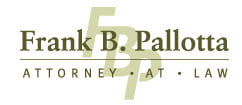If you’re a homeowner in North Georgia looking to enhance your property and potentially boost its resale value, a Home Equity Line of Credit (HELOC) can be a powerful financial tool. With property values on the rise throughout the region, an increasing number of homeowners are tapping into their home equity to fund improvements, consolidate debt, or take advantage of tax benefits. But what exactly can you recoup when selling your home after making upgrades with a HELOC? And what types of improvements offer the best return?
Let’s explore how a HELOC works, how it can be utilized wisely, and which projects offer the best return on investment.
Understanding the Basics: What Is a HELOC?
A Home Equity Line of Credit (HELOC) is a revolving credit line secured by the equity in your home. Unlike a home equity loan, which gives you a lump sum, a HELOC works more like a credit card: you can borrow up to an approved limit during a draw period, typically 5 to 10 years, and repay the balance as you go.
Why do homeowners love HELOCs?
- Flexible borrowing: Use what you need, when you need it.
- Lower interest rates: Since it’s secured by your home, rates are generally lower than credit cards or personal loans.
- Potential tax deductions: Interest may be tax-deductible if used for qualifying home improvements (for those who still itemize).
Using a HELOC for Home Improvements
One of the most common uses of a HELOC is to finance home improvement projects. These upgrades not only improve your quality of life while you live in the home but also help increase your home’s value when it’s time to sell.
But here’s the million-dollar question: Can you recapture the money you put in? The answer depends on what you improve, how much you spend, and the local real estate market at the time of sale.
Projects with the Highest Return on Investment (ROI)
Some renovations offer significantly better returns than others. Here’s a breakdown of popular projects and the average ROI in 2024 based on data from The Journal of Light Construction:
1. Kitchen Remodel (Minor or Mid-Range)
- Average ROI: 50–96%
- Why it matters: Kitchens are the heart of the home. Updating cabinets, appliances, countertops, and flooring can make your home more appealing to buyers without overcapitalizing.
2. Bathroom Remodel
- Average ROI: 45–74%
- Why it matters: A dated or cramped bathroom can be a dealbreaker. New tile, updated vanities, and energy-efficient fixtures are smart upgrades.
- Add-on: Adding a second bathroom can have a significant impact if your home currently only has one.
3. Deck or Porch Addition
- Average ROI: 68–83%
- Why it matters: Especially in scenic North Georgia, outdoor living is a high priority. A new deck or screened porch can create an appealing extension of your living space.
4. Curb Appeal Improvements
- Average ROI: 73–100+%
- Includes: Landscaping, new front door, siding replacement, or fresh paint.
- Why it matters: First impressions count. Homes with strong curb appeal sell faster and for more.
5. Energy Efficiency Upgrades
- Average ROI: 63–80%
- Includes: New windows, insulation, and HVAC system
- Why it matters: Buyers appreciate lower utility bills and eco-conscious improvements. Bonus: You may qualify for federal or state tax incentives.
What About the Rest of the HELOC?
Even if you don’t recapture every dollar spent on improvements, using a HELOC wisely can still pay off in other ways, especially if you’re using it for debt consolidation or other strategic purposes.
Debt Consolidation with a HELOC
HELOCs often carry lower interest rates than personal loans or credit cards. If you’re juggling high-interest debts, using a HELOC to consolidate them can result in:
- Lower monthly payments
- Fewer accounts to manage
- Significant long-term interest savings
Just make sure the math works out in your favor—and that you’re not putting your home at risk to finance short-term spending habits.
Is HELOC Interest Still Tax-Deductible?
Yes, but with limitations. Under current IRS guidelines, mortgage interest on HELOCs is tax-deductible only if the funds are used to “buy, build, or substantially improve” the taxpayer’s home that secures the loan. In other words, if you use your HELOC for qualifying home renovations, the interest may be deductible, as long as you itemize deductions.
This can be an excellent tax benefit for homeowners who are upgrading their homes and still meet the threshold to itemize.
Strategic Tips Before You Borrow
Before diving into a renovation funded by a HELOC, here are a few key considerations:
- Know your home’s current market value. Consult with a real estate agent or appraiser to understand your home’s equity and compare it to similar homes in the neighborhood.
- Avoid over-improving. Don’t invest $80,000 in upgrades for a $250,000 home unless you plan to stay long-term.
- Get multiple bids. Work with licensed, reputable contractors who are familiar with Georgia’s codes and climate conditions.
- Keep records. Save all receipts and contracts to document how HELOC funds were used, especially for tax purposes or future home appraisals.
When Used Wisely, a HELOC Can Build Wealth
Whether you’re upgrading your kitchen, adding a deck, or consolidating debt, a HELOC gives you access to affordable capital that can increase your home’s value and improve your financial outlook. However, it’s not a decision to be taken lightly.
I frequently advise clients on the legal and financial implications of utilizing their home equity. From reviewing loan terms to ensuring your property improvements are code-compliant and protected, having legal guidance can help you avoid costly missteps.
If you’re considering using a HELOC for home improvements or debt consolidation, I’d be happy to help you navigate the process.

